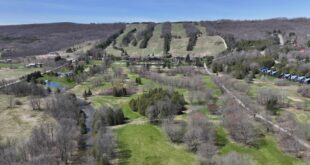Pink salmon are usually found in pacific and arctic waters.

Pacific pink salmon have been spotted lately in the White Bay area of Newfoundland, and they may have travelled previously unthinkable distances to reach Atlantic waters.
Pink salmon, also referred to as humpback salmon, are usually found in Pacific and Arctic waters, but have been seen off Newfoundland’s northern coast in recent years. The last major sighting — the beginning of what Neville Crabbe calls a new wave of sightings — was in 2017.
“It kind of has that elongated body and silver colours with some spots and other markings, but it is easily identified, upon a little closer inspection, as not an Atlantic salmon,” Crabbe, the executive director of communications with the Atlantic Salmon Federation, told CBC Radio last week.
“To my knowledge, the first pink salmon from this latest wave … was found in the Gander River in 2017. And in that year, there was another pink salmon caught near Cartwright.”
Pink salmon have also been detected in rivers in Labrador, Quebec, other parts of Atlantic Canada and the eastern United States.
Although it’s unclear how long the pink salmon has been in provincial waters, efforts to stock the fish have been made in other parts of the world.
The first major stocking program took place in Russia in the 1960s, Crabbe said.
“They were taken from a large island in the Russian Pacific called Sakhalin Island, and released as fry in some rivers that empty into the White Sea,” he said. “It was attempted first in the ’60s and ’70s, and the fish didn’t take…. It was tried again by the Russians in the ’80s and ’90s, and the fish took. And since then they’ve come up and around Scandinavia.”

However, Russia wasn’t the only place experimenting with stocking programs — and one of those places is pretty close to home.
Crabbe said a stocking program was also undertaken by Fisheries and Oceans Canada in Placentia Bay between 1959 and 1965.
While the stock was deemed unsuccessful, marine biologist Cyr Couturier believes it’s in the realm of possibility that the sighted fish came from Canadian attempts to introduce pink salmon to provincial waters.
“We did have some success in introducing these in the 1960s to the south coast. In one or two years it did find some spawners, some repeat spawners,” Couturier said.
“We have it here in our waters on the east coast of Canada. It’s also naturalized in the state of Maine, and you know, there are lots of indications that these populations are somewhat self-sustaining.”

Couturier said other factors could be bringing the salmon to Newfoundland and Labrador, including climate change and the search for a new spawning ground.
Both Crabbe and Couturier say it’s too early to tell what kind of impact the salmon will have on Atlantic salmon populations, but the North Atlantic Salmon Conservation Organization considers pink salmon an invasive species.
More work needs to be done to determine exactly where the fish came from, Couturier said, but he believes impacts on the native population would be minimal.
“It shouldn’t be a real big threat,” he said.
With files from The Broadcast
*****
Credit belongs to : www.cbc.ca
 Atin Ito First Filipino Community Newspaper in Ontario
Atin Ito First Filipino Community Newspaper in Ontario






